Has the United States ever identified a moneyer on our coins?
The identity of the moneyer or mintmaster on a coin dates from the time of the ancient Greek city-states; however, the United States has never marked our coinage with some indication of who was responsible for the finished product.
Why would a coin be graded Proof-55? I thought proofs were graded between Proof-60 and Proof-70.
Any proof coin certified by a third-party service to be in less than Proof-60 “condition” has problems, likely from having been mishandled
Category Archives: Coin Clinic
2000 Cheerios Lincoln Cent
The Sacagawea dollar of 2000 has boldly detailed tail feathers inside the Cheerios box. Along with that came a 2000 Lincoln cent. Was there anything specially detailed about the Lincoln cent?
Most 2000 Cheerios Lincoln cents can only be differentiated from other 2000 cents by the special packaging in which the coin is first encountered
Collectible v. Commemorative Coins
How can I tell when a coin is collectible or if a coin is a commemorative?
Coins can be both commemorative and collectible. You may be looking to differentiate between what may be a circulating commemorative versus a typical business strike coin. Some commemorative coins are meant to circulate, yet mark an event during one or several years
Business Strike v. Commemorative Coins
How can I tell when a coin is collectible or if a coin is a commemorative?
Coins can be both commemorative and collectible. You may be looking to differentiate between what may be a circulating commemorative versus a typical business strike coin. Some commemorative coins are meant to circulate, yet mark an event during one or several years
How to Best Collect Proof Coins
Is it better to collect 1936 to 1942 proof coins by the set or by the individual coin?
At one time, the proof set of 1936 to 1942 was the way to go, but today due to the hairsplitting grades assigned by third-party certification services, it would be challenging to find one of these sets intact as it was issued. Trying to match the coins in a set of any of these dates both grade-wise and with matching tone is challenging, but this is what collectors appear to favor.
Are proof sets for 1957 to 1963 still readily available, or have most of them been broken out to grade the coins individually?
There are still a significant number of original sets from the time period of 1957 to 1963 still available; however, if someone suspects even a single coin from such a set may grade significantly higher than the others, or if an individual coin appears to have frosted highlights, you can anticipate that set will be broken
Charge Coin Forerunner of Card
What is a charge coin?
Charge coins are actually the forerunner of the modern charge card. Produced in various shapes and sizes as well of any of several metal compositions or celluloid plastic, the so-called coins usually had a small hole used to hold the charge coin on a key ring. Charge coins were issued to department store clients for exclusive use at the store of issue
U.S. Mint Coin Glass Products
Has the United States Mint ever produced coin glass products?
The Fostoria Glass Company in Moundsville, W.Va., is responsible for most of the coin glass likely to be encountered
Disturbances, Interruptions on Coin Edges
The reeded edge of a coin I recently examined appears to be disturbed. Any thoughts on what this might indicate?
Disturbances or interruptions to the reeding on a coin’s edge may suggest the coin has been repaired, especially if the coin at some time was used as jewelry and a loop that had been fastened has since been removed. The reed count on coins in some series helps detect altered dates or counterfeit coins
Major Reed Count Varieties Exist
Differences in the reed count make for what I would consider being minor varieties. Are there any reed count varieties that are considered to be major?
Several of the Morgan silver dollar reed count varieties usually command a strong premium as does the 1876-CC Fine Reeding Seated Liberty quarter. The 153-count reeded quarter is more common than the normal variety with the standard 113 reeds
How Long Can Germs Live on Coins?
How long has it been estimated germs can live on our circulating coins?
No one has a solid number, however, it is known that viruses and bacteria can survive on most surfaces for about 48 hours.
How prevalent is narcotic residue on our bank notes?
It may be surprising, but almost all of our bank notes have traces of cocaine and other illegal drugs on them. One recent study indicated that up to 90 percent of the European Union, 92 percent of the U
Who Designed the Purple Heart?
Who designed the Purple Heart military decoration?
Elizabeth Will with U.S. Mint Chief Engraver John Sinnock can take credit
Detecting Counterfeit Coins in Fake Slabs
Is there any way to reliably detect counterfeit coins that have been put into fake slabs?
The saying “buy the coin, not the slab” still holds true. It may be more difficult to determine if a coin is a fake or not once it has been encapsulated, but always examine any coin purchased this way for both authenticity and to ensure you are satisfied that the grade assigned is correct.
I’m reading horror stories about the coronavirus in China and how the disease might be transmitted by their bank notes
Gallery Mint Museum Replica Producer
Who is the Gallery Mint Museum and is it okay to buy their coins?
The Gallery Mint Museum was located in Eureka Springs, Ark. It produced excellent replicas of U.S
Types of Deteriorating Die Doubling
Is there more than one type of deteriorating die doubling?
Inside Abraded Die Doubling is caused by wear at the edges and inside the design detail. It appears as an enlarged, irregular outline overlapping the original design element. Outside Abraded Die Doubling is caused by wear at the edges and inside actual detail
Types of Deteriorating Die Doubling
Is there more than one type of deteriorating die doubling?
Inside Abraded Die Doubling is caused by wear at the edges and inside the design detail. It appears as an enlarged, irregular outline overlapping the original design element
Do I Have a 1901/O-S Half Eagle?
How can I tell if I have a 1901/O-S half eagle?
This overdate variety is known as Breen 6780. It can be identified via the remnant of the curve of a “0” near the upper right of the final “1” in the date.
The motto “In God We Trust” first appeared on our bank notes during the Eisenhower administration in the 1950s
Background on the Belleville Mint
What is the story behind the Belleville Mint?
John Gibbs of Belleville, N.J., billed himself as the Manufacturer of Medals and Tokens
Coin Clinic: The ‘Big Three’ Certification Services
What sets the so-called “Big Three” certification services apart from the other similar services?
Each of the companies that are well-accepted as being standards of the business of coins has made their grading standards public. Each of these services is also well-funded and can afford to advertise aggressively. Some of the lesser services offer satisfactory work, however, there are also some services that ignore problems including cleaning and environmental damage to coins
Coin Clinic: Mint Didn’t Learn High Relief Lesson
By Richard Giedroyc
Since the U.S. Mint had so much trouble striking Ultra High Relief double eagles in 1907, why did they once again attempt to strike very high relief coins in 1921, these being the Peace dollars?
Since when has the United States government ever learned from its past mistakes? This is the same government that produced the unsuccessful 20-cent coin, then introduced the equally unsuccessful Susan B
Coin Clinic: Advice For Selling U.S. Mint Proof Sets
I’ve made the decision to sell in bulk my 1960-2019 U.S. Mint standard proof sets
Coin Clinic: What Happened to the Dalles Mint?
Why was a branch mint proposed for Oregon when a mint was already in operation in San Francisco?
A Pacific Northwest mint was perceived as being necessary following the discovery of gold in Idaho in 1860. Due to the distance between The Dalles and San Francisco, gold dust was being used as currency in Oregon rather than wait for coins to be struck more than 600 miles away and shipped to Oregon.
Why wasn’t the Dalles Mint ever put into operation?
There were continuing construction delays
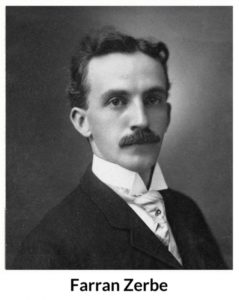
Coin Clinic: Who is Farran Zerbe?
Image courtesy of money.org
The American Numismatic Association has a Farran Zerbe Memorial Award. What can you tell me about Zerbe?
Farran Zerbe (1871-1949) was president of the American Numismatic Association (ANA) between 1908 and 1910
Coin Clinic: How Does Restoration Improve Coins?
What can a professional coin restoration service do to improve my coins that I can’t do by cleaning them myself?
Restoration services don’t “clean” coins; they restore them. Such services can remove artificially and deliberately applied contaminants, these contaminants having been caused by improper care or storage. This includes such contaminants as polyvinyl chloride, spots, and fingerprints
How Do I Determine the Grade on a Coin Described as ‘Uncirculated Details?’
How can I tell if my Hobo nickel is an original or a modern machined example?
An extremely worn, dateless Buffalo nickel without a mint mark likely of low value is used as the host coin for most modern reproductions. Cut lines are sharp and clean, while lacking residue in those cuts. You should not be able to feel the engraving if you have an original
Coin Clinic: How Can I Determine the Value of an Error Coin?
Wouldn’t eye appeal be superior on a coin that has a better finish than another of the same grade?
One person may like nicely toned coins while someone else doesn’t like toning at all. A third person might think the toning on one coin is attractive, while the toning on another coin is ugly. The same goes for your opinion of the mint luster, if still present
Coin Clinic: Has the U.S. Ever Restruck Coins of Another Country?
There are now services that will “conserve” my problem coins. What is the difference between their conserving my coins and someone else cleaning them?
The principle goal of conserving a coin is to remove any detrimental materials from the surfaces while protecting the surface originality. A coin that has been cleaned may have contaminants removed, however, the surface is no longer original
Coin Clinic: Color Designations
Are the color designations Brown, Red Brown, or Red a judgment call on half cents, cents, and 2-cent coins or is there some standard a coin must reach to be identified as such?
Uncirculated and Proof U.S. copper coins are considered to be Brown if they retain less than 5 percent of their original mint glow, Red Brown if the original red color covers 5 to 95 percent of the obverse and reverse surface, and Red if more than 95 percent of the surface retains this original color
The Difference Between Prooflike and Deep Mirror Prooflike
What is the difference between a Prooflike and a Deep Mirror Prooflike Morgan silver dollar?
A coin must first be at least Mint State 60 to qualify for either. According to Professional Coin Grading Service, the Prooflike has “mirrored surfaces at a distance of two to four inches. If the cartwheel effect or striations cause an area to lose clarity, the designation will not apply
Contemporary v. Modern Fantasy
Why would it have been expected that there would be more demand for the 20-cent coin in western states in 1875 than in the East?
There was a shortage of circulating currency in the West at that time, much of it brought about by the refusal of many people to accept anything but specie. This eliminated the circulation of the cent, 2-cent, 3-cent nickel, and the nickel 5-cent coins as well as paper money. Silver dollar production had ceased two years earlier, while Trade dollars weren’t meant for domestic use
What Are World War Two Tokens Made Of?
Are World War Two ration tokens made of cardboard?
The tokens are made of vulcanized fiber. The dyes used to make the tokens blue or red included an ultraviolet component meant to deter counterfeiters.
Why were these ration tokens produced? Weren’t there enough coins in circulation?
Many metals were considered too critical to the war effort to be spared for use in coins during the years of World War Two
Did They Try to Get a Mint in Chicago?
In an answer, you mentioned that the Indian Head and Lincoln cents were struck at the same time in 1909. Weren’t the Buffalo nickels and Jefferson nickels both struck in 1938?
As nearly as I can find, the last Buffalo nickels were struck at Denver in early 1938, legally completing the 25-year requirement. Schlag’s design for the Jefferson nickel was not accepted until late July, so production would not have started until later in the year, meaning the two did not overlap
Is There Any Way to De-Whiz Coins?
I have a sealed mint bag of Denver cents, dated Nov. 11, 1982. Would the coins be the small or the large-date variety?
They are probably the small date
Who designed the 1792 disme?
Can coins having belonged to Binion be identified?
Many of the more select coins, especially Morgan silver dollars, that Ted Binion put aside were later authenticated and graded by Numismatic Guaranty Corporation®. The coins include an acknowledgment they once belonged to Binion on their NGC® label.
The United States issued U
How War Medal Production Delayed Proof Coin Production
When did the U.S. mints finally satisfy the country’s demand for coins?
It may come as a surprise, but it wasn’t until the 1870s that production caught up with demand
1944 Jefferson nickel without mintmark
I have a 1944 Jefferson nickel without a mintmark. The Red Book states, “1944 nickels without mintmarks are counterfeits.” Why would someone go through the trouble of counterfeiting a nickel that otherwise lacks numismatic value? Is it possible this could be a mint error coin?
There are no known mint error 1944 nickels lacking a mintmark
What is a Nevada ‘Pooping Horse’ Quarter?
What is a Nevada “Pooping Horse” quarter?
The best-known state quarter varieties are the Wisconsin “Extra Leaf” coins of 2004. These two varieties were caused by some change or alteration to reverse dies. The lesser-known 2006-P Nevada “Pooping Horse” quarter is a variety caused by an extra piece of metal somehow getting into the reverse die in a position where it appears the horse to the far right may be relieving itself
Coin Clinic: Nov. 19, 2019
Do you have statistics on the Lincoln cent die life?
In 1909, the Lincoln cent dies were listed as 150,000. In 1914, Denver cent dies averaged 198,833. By the 1970s new steels and hardening raised them to more than a million for the obverse and 1
Resurrecting the silver dollar for circulation in 1840
Was the Manila Mint a branch mint of the U.S. Mint or did it operate independently?
The Manila Mint began as the Casa de Moneda for the Philippines under Spanish domination
The Mint Urban Legend of the 1875 Dot Indian Cent
I’ve noticed a small dot in the “N” in “United” on my 1875 Indian Head cent. Is this a variety worth noting?
There is an interesting story behind the 1875 Dot Indian cents. It is believed a mint employee was suspected of stealing coins, according to a mint urban legend
Short Snorters and Courtesy Autograph Notes
Is there any premium value to a banknote that has been autographed above the facsimile signature by the Treasurer of the United States?
There is a modest premium for such notes, depending on who signed the note, the condition of the note, and the denomination. Mary Ellen Withrow notes appear to be the most common. During her term, she became a Guinness Book of Records record holder for having signed notes in person
Largest U.S. Proof set in number of coins
Why can’t I find an exact figure for the mintage of the 1823 large cents? You have it included in the 1824 mintage.
We use the same inclusive figure as is found in most reference works for 1824 in all our publications and catalogs, which includes all 1823-dated mintage, as this is the best available figure based on extensive research into the Mint records. The early records were frequently confused, including two or even three years of production in a lump sum, or including coins struck with dies for any of several years, so it is impossible to go beyond the generally accepted figures
Did the U.S. Half cent ever have purchasing power?
I recently read about the 2019 Floating Head variety Lincoln cent in Numismatic News. Since the image wasn’t clear, can you describe the coin?
The 2019 Floating Head Lincoln cent has no neck, although the tie at the throat area is visible. Since multiples of the variety have been discovered, it is likely the variety is caused by an inferior or over-polished obverse working die than from foreign material becoming lodged momentarily in a die
Percentages of existing examples of old series of coins
Has anyone compiled percentages of existing examples of old series of coins?
Walter Breen cites a few figures: An estimated 3 to 6 percent of the large cents survived, 4 to 8 percent of the early silver, and 0.02 to 2 percent of the half cents. Any such figures have to be classed as estimates as there is no known way of determining exact numbers
Who were the Chapman Brothers?
Is it true that there are more counterfeit Indian $2.50 quarter eagle coins than any other U.S
How long have we had mintmarks on coins?
I found a 1965 two-cent coin from the British Caribbean Territories-Eastern Group. Where is this group?
The BCT-EG was formed in 1950 and uses a common currency. The group includes Trinidad and Tobago, Barbados, The Leeward and Windward Islands, British Guiana and The British Virgin Islands
Are there any surviving 1964-D Peace dollars?
Price guides don’t appear to agree on the value of individual coins, and what’s more, many times dealers are asking prices that disagree even further. Is it really that difficult to put a value on a coin?
We like to, what a coin dealer recently called “commoditize”, the value of individual coins. Eye appeal is perhaps the most challenging part of grading and pricing a coin, but understand each coin needs to stand on its own regardless of how we may categorize it
Why is the 1921 Canadian silver five-cent rare?
How many coins are needed for a complete Barber coin collection?
Assuming you mean the dime, quarter and half, respectively, 75, 74 and 73 coins to complete the three series, without varieties.
Listings refer to the lettered edges on the Saint-Gaudens $20 gold, but what does the lettering say?
The motto “E PLURIBUS UNUM” is on the edge.
Are there two different designers for the two years of issue of the Canadian George V dollars?
The 1935 issue was the Jubilee design of Percy Metcalf, technically a commemorative
Why is there a name on my Capped Bust half dollar?
Why was the production of the Peace silver dollar resumed in 1934?
Silver was being purchased at 50 cents per ounce by the government through the Act of May 12, 1933. On Dec. 21, 1933 President Franklin D
Indians, Quarter Eagles, and Peace Dollars
What are the U.S. gold coins for which I should be most watchful regarding their possibility of being counterfeit?
Any $1 gold, Indian $2
How many tokens were struck by Dr. Feuchtwanger?
Were there any competing designs for the new cent in 1909? Who designed the wheat reverse?
Victor David Brenner was selected as the designer by President Theodore Roosevelt, without any competition, at least from outside the Mint. The wheat ears design was one of three submitted by Brenner, a point often overlooked in the publicity given the obverse. It’s ironic, considering the controversy about his name and initials on the cent, that if he designed both sides of a coin in 2005, his initials would have appeared on both sides without the slightest question
Is it Illegal for Toll Booths to Reject US Currency?
I have dozens of rolls of lightly circulated 1960-D Small Date Lincoln cents, 1968-S to 1974-S Lincoln cents, Jefferson nickels with various die breaks around the rim, etc. Is there any collector value to these?
As with any other item there ‘may’ be someone who is interested in purchasing these coin rolls at a modest premium. Generally speaking, roll collecting isn’t as popular as it was in the past
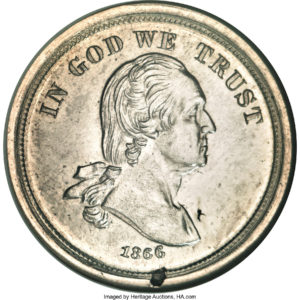
The Mystery Behind ‘Magicians Coins’
I’m looking to invest in rather than to collect gold in some form. Are gold stocks or gold coins the better choice?
Are you looking for growth or a hedge against market calamities or hyperinflation? Gold mining stocks can be part of a retirement portfolio. Gold stocks offer appreciation, compounding, and a likely faster return
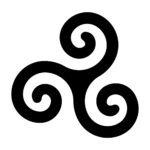
How rare are the 1981 SBA dollars?
What is the weight of the thick copper Russian ruble of 1771 that you mentioned some time ago in this column?
The 1771-dated Sestroretsk novedel rouble, struck in 1845, weighs more than 4 pounds. It is 77.6 mm in diameter, 26 mm thick and round, in contrast to the rectangular plates used by Sweden
Does King Edward VIII Appear on Any Canadian Notes?
Please explain the difference between an essai, a piefort, and a proba.
An essai, or essay, is a trial strike of a design, made to test the dies. It may be in a different metal and a different thickness than the normal coin and may also be considered to be a proof coin or a pattern
Coins Being ‘Cracked Out’ of Third Party Slabs
How long would a cancelled note (regardless of technique) remain in Treasury hands before being eventually destroyed, if that was in fact the case?
I didn’t find anything specific to cancelled US bank notes, but Howard M. Berlin’s book The Coins and Banknotes of Palestine Under the British Mandate, 1927-1947 gives some insight into the subject through Palestinian Mandate currency.
According to Berlin, “Even as late as 1974 bank notes of the Palestinian Currency Board were redeemed and the Crown Agents in London still await any bank notes that may be redeemed
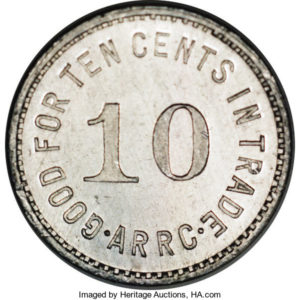
Alaska Rural Rehabilitation Corporation tokens
Can sharpness of color of an Uncirculated coin impact the Mint State grade (between 60 and 70) assigned to it?
The sharpness of color is particularly important to prooflike coins, but the sharpness of color or the severity of toning can impact the grade of any coin. This needs to be determined on a case-to-case basis.
Why were Alaska Rural Rehabilitation Corporation tokens issued? Weren’t US coins legal tender in Alaska at the time?
The tokens of which you speak were issued during the 1930s through the US Federal Emergency Relief Administration
Which toned silver coins bring the highest prices?
Which toned silver coins tend to bring the highest prices?
Since eye appeal is the main factor, there is no “one size fits all” formula for valuing toned coins. In general a coin exhibiting naturally occurring waves of neon hues on the obverse tend to be the most popular. I can’t be more specific than that
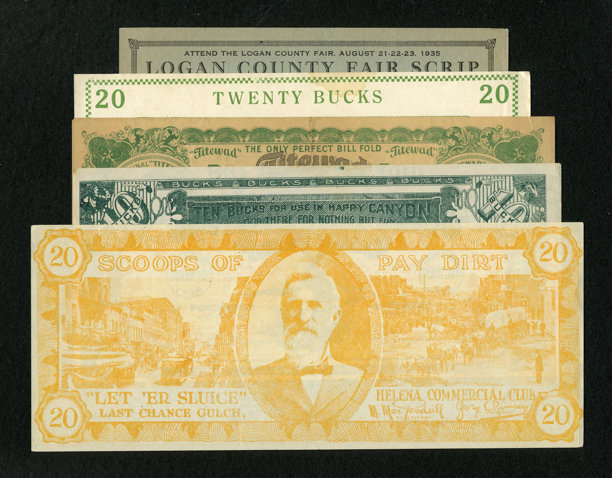
Disney Dollars and other Souvenir Scrip
Aren’t Disney dollars and other currencies offered by entertainment venues as an alternate to cash a form of seignorage by which the issuer benefits?
Souvenir scrip can be purchased at a theme or entertainment park at face value. The scrip can later be redeemed by spending it at that venue. This is a novel way of creating seignorage for the issuer since many people will simply keep the scrip as a souvenir rather than spend it
Does an ANA membership have to be sponsored?
I hate to make it sound crass, but the only requirement for membership in the American Numismatic Association appears to be paying dues. Is it true that at one time your membership had to be sponsored?
I don’t know when it changed, but when I joined the ANA about 40 years ago you needed a member to sponsor you. A friend recently told me of his potential sponsor asking him some questions to ensure he was sufficiently knowledgeable prior to being sponsored
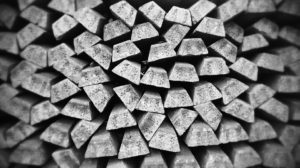
What are the stipulations of legal coin altering?
I recently acquired a coin that has been painted. Is this legal?
Since whomever did this didn’t ‘fraudulently’ alter, deface, or mutilate the coin, painting the coin is legal. Had the person tried to alter the denomination this act would have been illegal
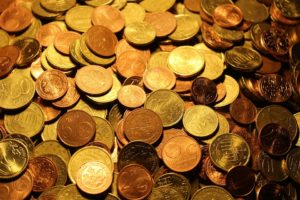
Can an auctioneer avoid having their lots swiped?
If I employed auction sniping software wouldn’t this result in my paying a very high price for a coin that might not have bid as high otherwise?
Programmed bidding acting as your auction representative will result in higher prices realized when more than one bidder is using this software. In such a case you have multiple sniping bidders trying to outbid each other using automation. When only one bidder sets a high maximum bid and no-one else is willing to challenge the automated counterbids the price for which a coin might sell could be much lower than if two competing bidders are in the same room

Overdates and mintages
Shown is an 1823 10C Large Es is NGC graded MS66 from the Joseph C. Thomas Collection. (Image courtesy of Heritage Auctions
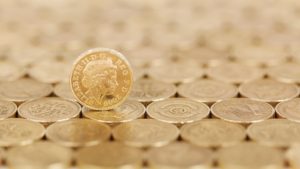
Will gold coins stored in envelopes tone?
Will gold coins stored in envelopes containing some sulfur tone in time?
Gold is an inert metal that doesn’t rust or tarnish when exposed to air or water. Since most gold coins struck for circulation contain other metals, these metals may react to the environment if they are near the surface of the coin.
Will gold bullion coins such as the Gold American Eagle tone if they are stored in paper or cardboard holders that contain sulfur?
Gold bullion coins including the GAE, Canadian Maple Leaf, Austrian Philharmonic and others are typically 0
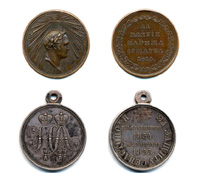
Do Challenge coins use specific metals?
Modern art medals occasionally use non-traditional compositions including rocks, glass, and even organic materials. Is there a specific metal or metals from which Challenge Coins are expected to be produced?
There are no specific ‘rules’ dictating the designs or composition a Challenge Coin must follow. Since Challenge Coins are privately issued they have already been made using gold, silver, brass, nickel, iron, copper and porcelain
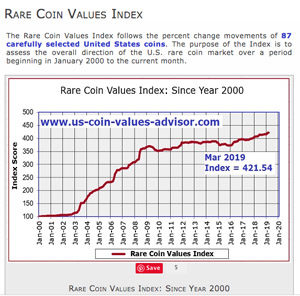
How does the Rare Coin Values Index work?
(Image courtesy www.us-coin-values-advisor.com/rare-coin-values-index
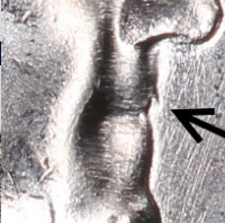
Franklin has buck teeth on ‘Bugs Bunny’ half
(Image courtesy of www.pcgs.com)
What is meant by a “Bugs Bunny” half dollar?
“Bugs Bunny” is a nickname or slang term for a die clash that appears across Benjamin Franklin’s mouth on the half dollars, giving him the appearance of having buck teeth
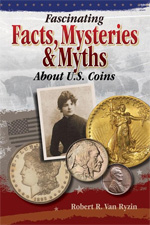
No museum exclusively for counterfeits
Is there a museum of counterfeit coins?
There are many museums in which counterfeit coins reside, some known to be fakes while others deceive the curators. I am aware of collectors who specialize in either contemporary or modern counterfeits, but I am not aware of a museum that displays counterfeit coins exclusively on purpose.
Is there a way to determine if my coin, as well as the third-party certification service slab in which it is housed, are genuine without cracking the coin out for re-examination?
There are some diagnostics through which fake coin slabs might be detected, but the counterfeiters are good at their trade

Coinage legislation left out the word “The”
(Image courtesy www.usacoinbook.com)
Why is “The” missing from the inscription “United States of America” on our coins?
Section 10 of the Mint Act of April 2, 1792, says, “…with this inscription, ‘UNITED STATES OF AMERICA,’…” Once this tradition was established, nobody saw any need to change it
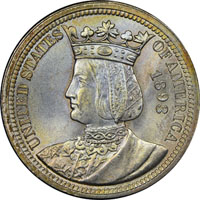
Isabella quarters not meant to circulate
1893 Isabella commemorative quarter (Image courtesy www.ngccoin.com)
Unsold Columbus half dollars were released into circulation What about the Isabella quarters?
The Isabella quarters were sold to collectors and the public but were not released into circulation
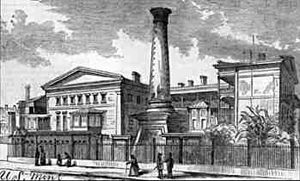
State of Louisiana seized New Orleans Mint
(Image courtesy us-mint.info/New-Orleans-Mint.html)
I know that the New Orleans Mint struck for both the federal and Confederate governments, but wasn’t there a third entity?
The third was the State of Louisiana, which seized the New Orleans Mint on Feb
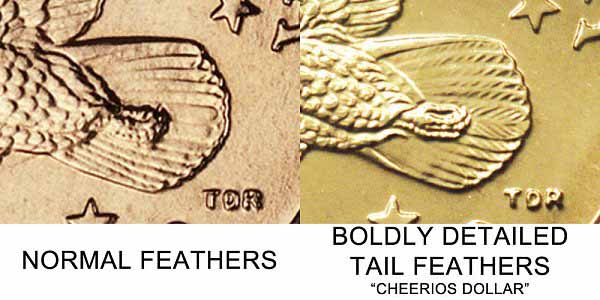
Do coin dog tags exist?
When did the U.S. military begin issuing dog tags?
War Department General Order 204 dated Dec

No additional strikes for rare varieties
Is there any chance that the Mint would deliberately strike additional examples of some rare, new variety after it appears? I see that they have duplicated some of the hubbing varieties.
This was one of numerous rumors that floated about and were quoted widely on the Internet and some of the online services. The duplication referred to occurred only under test conditions by the Mint and was done only to determine exactly how a given variety occurred so that corrective measures could be taken to prevent it from recurring
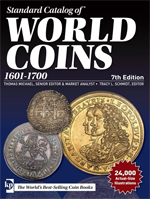
Weak strike or worn die?
How can I tell if my Uncirculated coin lacks detail because of it being a weak strike rather than being made from a worn die?
A weakly struck coin often displays a lack of detail in specific areas of the coin design, while a coin struck from a worn die typically shows mushy or fuzzy detail. A worn die may also begin to disintegrate, with raised lines appearing on the coin where the die has cracked.
Can you explain “album slide marks?”
Album slide marks and cabinet friction have one thing in common: the marks appearing on a coin occurred because of the method of storage rather than due to wear
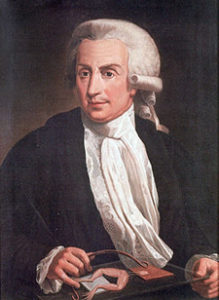
‘Galvanizing’ named after Luigi Galvani
Luigi Galvani (Image courtesy https://commons.wikimedia.org/ wiki/File:Luigi_Galvani,_oil-painting)
Is electroplating also known as galvanizing?
Today galvanizing only applies to a plating in zinc, but the process and its name originate from its inventor Italian physician Luigi Galvani in 1780
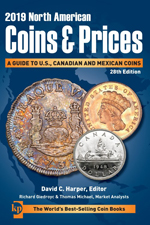
Dime-stock planchet use for quarter
What can you tell me about a 1970-D quarter on a thin planchet?
You have one of an estimated 20,000 that were struck at Denver on dime-stock planchets. These were planchets that were accidentally punched from dime thickness strip to quarter diameter at San Francisco and shipped to Denver to be struck. There are similar quarter stock dimes, but only a very few of those escaped the Mint

‘Rocket’ removes residue from blanks
Coinage blanks go through several processes that include lubricants. How are these oils, etc., removed so the coins don’t turn out to be greasy to the touch?
Coin blanks are put through what has been nicknamed “rocket” where hot air is blasted to remove oils and water residue
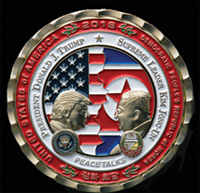
Medal maker not easily determined
(Image courtesy whitehousegiftshop.com)
I recently received the Korean Peace Talks Summit Coin [not really a coin of course] being sold by the official White House Gift Shop. Do you have any information about who manufactured this piece?
I was surprised how little information was published on who manufactured this souvenir
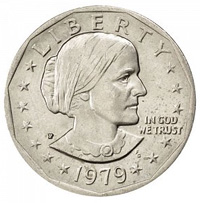
No reeding on off-center Anthony $1
(Image courtesy www.usacoinbook.com)
I’m concerned that my Anthony dollar might be a counterfeit
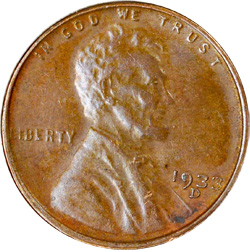
VDB initials quietly return in 1918
Why were the initials VDB resumed on the obverse of the Lincoln cent in 1918?
The initials were restored following the replacement of Secretary of the Treasury Franklin MacVeagh with William McAdoo in 1913 and the passing of U.S. Mint coin designer Charles E
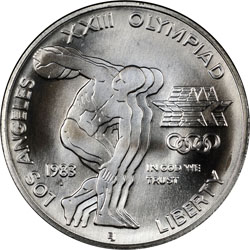
On edge about confusing coin terms
Listening to other collectors and dealers at a coin club meeting, I came away confused. They were talking about rims, edges, and collars as if they all meant the same thing. Do they?
The three terms each have differing meanings
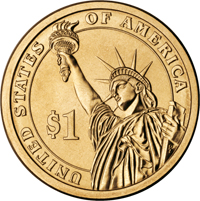
What four words are on all U.S. coins?
Trick question: What four words appear on all U.S. coins?
Easy

Could VDB appear on later cents?
(Image courtesy www.usacoinbook.com)
Is it possible for there to be a VDB cent between 1910 and 1917?
There is controversy whether working die 1909-VDB cents were reused following the initials VDB having been ground off the dies
Silver Queen located in Virginia City
(Image courtesy truewestmagazine.com)
What is the history of the portrait known as the “Silver Queen?”
In a tavern in Virginia City, Nev., there’s a painting of a woman whose dress is decorated with 3,261 silver dollars
Damaged cent found in proof set
One of the San Francisco Reverse Proof sets I ordered has a blatantly discolored and scratched cent to the point where you can see the gray zinc color in the groove. Do you know if a gloved or plain ol’ human hand puts the coins in the plastic slots?
I can’t be certain the Mint has a written policy on how Mint personnel handle proof coins; however, if images the mint has posted online are to be believed, gloves are to be worn when handling these coins.
Will the problem with the cent in my 2018 San Francisco Reverse Proof set impact reselling the set at a later date? A more knowledgeable friend said he doesn’t think it’s a big deal because the more sophisticated buyer, should I sell years hence, will look at the silver coins first
Error coins not seized
An example of the 2000-P error coin, which has a Washington quarter obverse muled with the reverse of a Sacagawea dollar. (Image courtesy www.pcgs
Sacagawea dollars struck in gold
Base metal Sacagawea dollar coin. (Image courtesy www.usacoinbook
Pattern for blind ahead of its time
Please tell me what a “blind man’s nickel” is.
It’s a rarity, that’s for certain. Two 1882 pattern nickels, Judd 1683 and 1697, each had five equally spaced bars on edge
Boy Scout medal features swastika
(Image courtesy coinquest.com)
What can you tell me about a medal on which a Boy Scout appears mounted on a horse on one side, with a reverse swastika on the other side?
These medals were issued between 1910 and 1914 by the Excelsior Shoe Company to mark the company’s association with the then-new Boy Scout movement. There are five major varieties of this medal to be collected
Maverick tokens can be tracked down
Please find attached two pictures of a token that I have recently acquired. Would you be able to help me identify what this token is or point me in the direction of where I can find material on how to identify this token?
A token that does not identify the issuer is called a maverick. These are particularly challenging to identify
Short snorters organized by signatures
This Series of 1935-A $1 HAWAII note features signatures of Bob Hope and his entire USO entertainment troupe. (Image courtesy Mark Hotz)
Is there a way in which people typically collect short snorters?
There are many ways to collect these notes, but the most popular is likely when the note provides information including names, ranks, serial numbers, military unit designations, and other information of historical value.
Could the signatures on a short snorter be counterfeits? In other words, could someone forge a famous person’s signature on such a note?
Signatures in question should be examined by a handwriting expert
Reference catalog not an offer to sell
If you don’t buy or sell coins, why do you publish all those catalogs offering them for sale?
Catalogs, like coins, come in varieties. There are two principal varieties of coin catalogs: reference catalogs and sale catalogs. We publish only reference catalogs
BEP just one issuer of souvenir cards
Should I consider Bureau of Engraving and Printing printed souvenir cards to be the only true souvenir cards?
Souvenir cards are an exonumia area of collecting occasionally sought by both coin and stamp collectors. The BEP began its current program in 1969, but it is only one source of these cards. There is no reason you can’t collect those as well that are printed by other sources
Prince of Wales service with a smile?
Reverse of English twopence featuring the phrase “Ich Dien” on the ribbon (KM987).
Would you please translate “Ich Dien,” the German phrase on the English twopence?
It means “I Serve,” from the badge of the Prince of Wales. It dates to Edward, the Black Prince (1330-1376)
Eagle box tape shows mint of origin
Between 2011 and 2014, the San Francisco Mint facility supplemented production of silver American Eagles otherwise struck at West Point; yet despite lacking a telltale mintmark, the certification services have been able to encapsulate these coins identifying which mint made the coins. How can they do this?
Silver American Eagle coins purchased in the large green monster boxes between 2011 and 2014 were secured with yellow strapping tape on which the mint of origin is marked. The U
Coin Clinic: Different overdates on 1825 $5 gold
By Richard Giedroyc
Q Are there two different overdates for the 1825 $5 gold?
A All but two of the known specimens show the “5” in the date over a “1.” The other two have the “5” over a “4.” One of these was in the Eliasberg Collection, the other in the Kaufman Collection when sold in 1978
Eagle’s wings gave Ben buck teeth
Bugs Bunny variety of the 1955 Franklin half dollar. (Image courtesy of CCF Numismatics [CC BY-SA 3.0 (https://creativecommons
General put name on auto dollar
I’m told that the Chinese general who had the automobile dollar minted secretly put his name on the coin. Is this correct?
Several authorities agree that Gen. Chow, who was governor of Kweichow Province from 1926-1929, did order that the Chinese characters for Hsi-ch’eng be hidden among the grass blades, which cover the ground in the foreground of the obverse
Damaged coins get put into jewelry
Can you explain what is meant by a “jewelry lot” of coins?
This is a group of coins that due to their low quality or damaged state are more suitable to be converted into jewelry or to be scrapped for their intrinsic value than to be collected.
2017 $25 American Eagle palladium bullion coin (Image courtesy www.usmint
Reopened ‘O’ Mint made proof dollars
New Orleans Mint (Image courtesy https://us-mint.info)
Branch mint proofs are unusual. Why did the New Orleans Mint strike proof silver dollars in 1879?
It has been suggested the proofs were struck to mark the reopening of the New Orleans facility, which had closed during the Civil War
Mint packaging can be a problem
Is it safe to leave my proof coins and mint sets in the packaging they were in when I received them from the Mint?
As a general rule, the proof set hard plastic packaging is airtight, but the plastic envelopes used for the mint sets are not. Several world mints that use similar mint set packaging state specifically that it is not intended for long-term storage. The coins would be better off in an airtight holder, anyway
First commem definitely Columbian
(Image courtesy www.ngccoin.com)
Reader Frank Crowe wrote: This is in response to the Coin Clinic comment in the June 5 “Numismatic News” concerning the debate whether or not the Columbian Exposition half dollar should be considered the first commemorative coin or not
Veterans opposed design
I would like to know what symbol was originally on the Peace dollar, but not distributed. Was it a broken sword? Do any exist?
According to Q. David Bowers in Silver Dollars and Trade Dollars of the United States, “Representatives of World War veterans’ groups had obtained a copy of the drawing for the reverse and did not like what they saw
Mints strike more than legal tender
Does the term “mint struck” mean the piece is a legal-tender coin?
Far from it. The mint might be either a government or a private mint. The item might be a circulating coin, a non-circulating proof or commemorative, or even a medal, token, or just about any other object that can be placed between a pair of dies
Stars do not signify genuineness
Stars on the reverse of the Kennedy half dollar number significantly more than 13. (Image courtesy www.usacoinbook
Stars do not signify genuineness
Stars on the reverse of the Kennedy half dollar number significantly more than 13. (Image courtesy www.usacoinbook
Gold bars made since the Bronze Age
When and where was the first gold ingot (or bar) made?
Metal ingots have been cast since the dawn of refining when the Stone Age was replaced by the Bronze Age, which in turn was replaced by the Iron Age. No exacting time line exists for when one of these metal ages replaced a previous “technology.” Gold has been recognized as something of value to be used as money since at least the Bronze Age, perhaps earlier
Check for whizzing on silver dollar
How can I tell if a Morgan dollar has altered surfaces and is not prooflike?
Examine the coin under significant magnification and good lighting. If the coin has been whizzed to improve the surface appearance, it will become obvious through minute hairlines.
How can I tell a proof from a prooflike Morgan silver dollar?
Any proof coin should have obviously squared rims, while a business strike coin (including prooflike Morgan dollars) will have a gently sloping rim
Full Steps help Jeffersons stand out
(Image courtesy http://jeffersonnickel.org)
How important is the appearance of Full Steps on a Jefferson/Monticello nickel to the overall grade of the coin?
Full Steps is a designation treated the same as are Full Split Bands on Mercury dimes and Full Head on Standing Liberty quarters. This doesn’t indicate the coin is fully struck or necessarily without some indication of abrasions or wear
Firm put name on its reproduction
An example of the Massachusetts Pine Tree shilling.
I have a Massachusetts Pine Tree copper cent that has the word “Copely” on it. What is it?
It is a copy struck in 1960 by the Copely Coin Co
Overstruck quarters raise eyebrows
Who is responsible for the quarters that have been overstruck to poke fun at some political figures?
No one appears ready to admit to making these, although there are a number of coin dealers willing to sell them.
I understand there was a problem in Canada recently when, due to the drop in the spot price of silver, the face value of some of Canada’s commemorative silver coins exceeded their intrinsic value. Has this happened elsewhere?
It has happened previously in both Panama (gold $100 coins) and the British Virgin Islands (silver coins)
Dollar sign written before numerals
Why do some countries put the denomination symbol like the dollar sign before the amount and some after?
In the U.S., we write $10 and read it as ten dollars, exactly the reverse of the way it’s written
Top officials on Assay Commission
Our now defunct Assay Commission included some coin collectors. I’m certain this wasn’t the original intent. Who were the commissioners initially?
The first U
Funny-looking coins not likely patterns
My information is that any unusual coin found in circulation is either a pattern or a trial strike. Care to comment?
You would be surprised by the number of letters in my files, frequently from dealers, making that same assumption. The fact of the matter is that there are almost no documented cases of either a pattern or trial strike getting into circulation in the 20th century, and not very many in the previous century
Shield nickel has unimaginative design
The Shield nickel design is unimaginative, and other than the 2- and 3-cent coins of the time is the only coin lacking a depiction of Liberty. Why the shield?
The reasoning for yet another shield only two years after the introduction of the 2-cent coin is a lack of imagination and for that reason was loudly criticized. According to comments published in the 1866 American Journal of Numismatics, “The motto In God We Trust is very opportune, for the inventor of this coin may rest assured that the devil will never forgive him for such an abortion
Any originals of gold coin restrike?
(Image courtesy www.apmex.com)
How can there be restrikes if there weren’t any original coins?
The question referred specifically to the Austrian 1915 20 corona gold piece
Wheat reverse 1959 cent a puzzler
(Image courtesy www.goldbergcoins.com)
Is there such a thing as a 1959 Wheat Reverse Lincoln cent?
A lot of people would like the answer to that question
Coin designer initials treated differently
(Images courtesy www.usacoinbook.com)
The letter “L” had appeared on Indian cents to identify Longacre as the designer
Left and right confusing for coins
I’m never sure whether rules governing left and right on a coin refer to the coin’s left and right, or the viewer’s left and right. Can you help?
Where possible, coin designs follow the rules of heraldry. Under those rules, the left and right are those of the design, not the viewer
Put unsold commems into circulation?
The Booker T. Washington and George Washington Carver half dollar was the the final commemorative half among classic U.S
Bullion coins will survive cashless push
The cashless society concept appears to be catching on worldwide. What is your long-range view for the total demise of coins and bank notes?
Coins and bank notes as we know them might but in my opinion are not likely to change or go away. Specie coinage will remain even if circulation currency doesn’t
Curls gave Lincoln portrait texture
(Image courtesy www.usacoinbook.com)
Is the bust on the Lincoln cent an accurate reproduction?
Victor David Brenner took liberties with Lincoln’s hair, giving it the 1909 version of a permanent wave, as all contemporary photos show Lincoln with straight hair
Hard alloy created minting varieties
Why is it that there are so many date varieties within the Shield nickel series?
The metal hardness of the copper-nickel and the inexperience of the U.S. Mint with such a challenging coin of such a composition were the likely culprits
Old notes weigh more than new ones
(Image courtesy https://www.uscurrency.gov)
Would a stack of 490 new U
Nearly 3 million coins in CC hoard
Can you tell me what was in the General Services Administration inventory of Carson City dollars when the auction sales began?
The inventory was without question the largest single accumulation of Carson City silver dollars. By date, followed by number of pieces, it included:
1878-CC 60,993
1879-CC 4,123
1880-CC 131,529
1881-CC 147,485
1882-CC 605,029
1883-CC 755,518
1884-CC 962,638
1885-CC 148,285
1889-CC 1
1890-CC 3,949
1891-CC 5,687
1892-CC 1
1893-CC 1
The total was 2,937,695 coins.
Aren’t those who oppose the abolition of the one-cent coin using a rather dated argument?
Perhaps a bit out of context, yes
Change to Small Date deliberate
Close-up views of the 1982-D Large Date cent (top) and the 1982-D Small Date cent (bottom).
Was the change made deliberately from a Large Date to a Small Date cent in 1982?
Cents made early in 1982 are primarily composed of copper, while the later issue is comprised of copper-plated zinc. The obverse die was modified to allow better strike detail on the copper-plated zinc coins
Hawaii cents ‘sacrificed’ to volcano
Do you know the legend that surrounds the disappearance of the 1847 Hawaii cents?
The reverse design of the 1847 cent includes a wreath of ohelo leaves and berries. This is a plant that grows on the slopes of Kilauea volcano. The connection was enough to make the coins popular as a substitute sacrifice to Pele, the goddess of fire who was believed to live in the volcano
‘Pennies’ for ID
What are Masonic pennies?
Masonic “pennies” are actually medals identifying the individual as a member of the Masons. Most of these identify the Masonic lodge and the member. The concept of a medal as a membership card likely began at a time the Masons were a clandestine society
South liked hard money after Civil War
Were silver dollars popular only in the West in the latter part of the 1800s?
A point often overlooked in the annals of this unloved and mostly unwanted coin was that it did enjoy a period of popularity after the Civil War in the South for at least two reasons. Most of the emancipated slaves were illiterate and on that account refused paper money in any form. The memory of the worthless paper money of the Confederacy was still fresh in the minds of everyone so the metal dollars took on a special importance, but one that would not last
Ikes at face value
(Image courtesy www.apmex.com)
Is there a premium value for common date copper-nickel Eisenhower dollars?
I found several Internet websites where bulk lots of circulated common date Eisenhower dollars are selling for a modest premium
Coin’s appeal in eye of beholder
I hear a lot about eye appeal. There are standards for such things as the depth of a mirror surface and for frosted devices. Are there any standards for eye appeal?
Although certification services usually consider eye appeal as a component of the condition for a Mint State or proof, realistically eye appeal impacts the desirability of every coin
Proof coinage move not part of plan
Wasn’t the present Philadelphia Mint (the fourth, constructed in 1969) intended to continue proof coinage?
Up until then, the Philadelphia Mint had struck almost all the proof coins issued. However, the coin shortage, capped with the failure of the roller-die press, caused a change in plans. The Special Mint Set production had already been shifted to San Francisco, which also had successfully struck proof coins for Panama
Old slabs worth more
(Image courtesy www.ngccoin.com)
I understand coins housed in some of the older third-party certification service holders are worth more than are others of the same grade
Grades multiplied over years
How did we go from Morgan silver dollars simply being graded uncirculated to our convoluted Mint State-60 to MS-70 plus additional stickers system?
The numerical system began with grades MS-60, MS-63, and MS-65. By the mid-1980s, it became obvious this was a “one size (actually three sizes) fits all” policy that didn’t work. There were coins that were better than one grade, but not as nice as the next grade
Numerous overdates in GSA sale
How many of the 80/79 and 8/7 overdates were included in the GSA sales of the 1880-CC dollars?
Out of the 131,000+ 1880-CC dollars, about 50,000 were overdate varieties. Slightly more than 15,000 of those were the VAM-4 variety of the 80/79.
I have a Spanish Carolus IIII 2 reales coin, but it is not listed under that country
Where does the ‘Clinic’ column appear?
Currently the Coin Clinic column is being published only in Numismatic News (and perhaps World Coin News?), but not in Coins magazine. When was the last time such a column was present in Coins? Also, does Bank Note Reporter have an equivalent Clinic-like column?
The “Coin Clinic” column appeared in Coins magazine until the death of Alan Herbert in 2013. That is the same year I took over the column in both Numismatic News and World Coin News
Only one owner for 1794 dollars
1794 dollar obverse (Image courtesy www.usacoinbook.com)
Is it true that all 1794 dollars passed through the hands of a single owner?
It’s true
Cents look like copper coating is missing
Last week while searching through penny rolls, I found six pennies that have a pure zinc look to them. No copper coating at all. I have found very little information on this
Horn measures wear on Buffalo
How do I tell whether my Buffalo nickel is a “full” or “quarter” horn? Is this some kind of grade like “full steps?”
It is not a grade but a visual check of the condition of the coin, or a key area to check for wear. To determine the amount of horn remaining, you either need an uncirculated coin or a good picture of one to compare the amount of horn detail or outline remaining. An uncirculated, fully struck coin will have a full horn, with the entire outline showing
Why not a West Point cent to go with 2017-P?
West Point Mint facility
Will there be any 2017-W Lincoln cents made for general circulation with an explicit “W,” or will such cents be misleadingly minted as 2017-P like the Philly ones? What act of Congress forced the “P” into 2017-P cents?
The West Point Mint facility hasn’t struck Lincoln cents since 1986. West Point currently strikes proof and uncirculated bullion coins as well as some commemoratives. The addition of mintmarks and other design modifications are at the discretion of the Mint
Government was speedy in 1964
(Image courtesy www.usacoinbook.com)
I’m told that the Kennedy half was one of the speediest pieces of government action in history
Some coins had favorite locations
Is there any truth to the story that back when coins were real silver they tended to congregate in certain cities?
They really did. Old records of the Federal Reserve shows that prior to the switch to clad coins, the half dollars collected in New York City and Atlantic City; cents in Pittsburgh and Dallas; quarters in San Antonio, Little Rock and Cincinnati; and both dimes and nickels headed for home in Baltimore, Louisville and Nashville. These cities were the ones likely to return coins to the Fed, rather than just drawing them, and the pattern repeated for many years
Morgan dollar varieties have colorful names
(Image courtesy www.vamworld.com)
Is there a Morgan dollar variety known as ‘scarface?’
The 1888-O VAM 1B variety is known as “scarface
Error nicknames date back years
(Image courtesy www.usacoinbook.com)
I know that fanciful names were popular for minting varieties in the 1960s and that different type coin designs have been nicknamed, but were there similar slang terms for die breaks on older coins?
There are numerous examples in the old listings
Identical marks on coins evidence of fakes
I have two About Uncirculated gold $20 double eagles, same date and mint mark, each with what appears to be identical contact marks on the obverse. What are the chances of this being legitimate, or do I more likely have fakes?
You are wise to be suspicious. I can’t make a judgment without seeing the coins, but it is highly suspect when two coins have contact marks that are identical
Game counters look like old coins
What can you tell me about a coin that appears to be a mule of an Argentine coin and a U.S. gold quarter eagle? It’s been in the family for many years
What’s Nixon got to do with silver dollars?
Richard M. Nixon
Can you explain the term “Nixon dollars?”
An inscription and facsimile signature of President Richard M. Nixon appears inside the lid of the black and blue cardboard boxes in which Carson City minted Morgan silver dollars were sold by the General Service Administration
Two dollar designs in 1921 seem strange
(Image courtesy www.usacoinbook.com)
It seems rather strange the Peace dollar was introduced very late in 1921, rather than waiting until 1922
Die gouge on dollar looks like spitting eagle
(Images courtesy www.apmex.com)
How did the 1891-CC Spitting Eagle silver dollar come to have a spitting eagle?
The die variety is the result of a die gouge
Icebreaker appears on Finnish coin
Is there a coin with an icebreaker on it?
Beginning in 1972, on the old Finnish 5 markka appears just such a vessel. It is the icebreaker “Varma.”
Supposedly there is a Canada dollar that was boycotted by the Indians
Morgan $1 once known as ‘Bland’
I understand at one time the Morgan silver dollar was referred to as a Bland dollar. Where did this come from?
The name is derived from the Bland-Allison Act, through which the U.S
Paquet $20s rare from Philadelphia
Can you explain what a Paquet coin is and how often such coins were struck?
United States Mint Assistant Engraver Anthony Paquet used the font now bearing his name on some of his 1860 $20 double eagle gold coin patterns. The Paquet font uses tall, thick vertical and diagonal lettering with thin horizontal and serif characteristics. Philadelphia Mint double eagle coins using this font were never released, with just two examples extant in collector hands
Good old 8894 most numerous fake
I have an old note, serial number 8894, but it is $10,000 rather than $1,000.
You have an alteration of a copy. No
Coin prices vary for many reasons
I recently attempted to price coins in specific grades I planned to purchase. I found different prices depending on whether the coin was certified or not, and by whom it was certified. Can you explain these differences?
Prices do indeed vary from raw to slabbed to most popular slabs
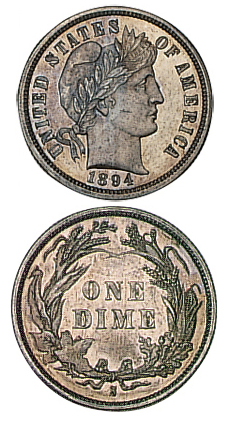
Small coins less sought than large
Maybe it’s my imagination, but Barber dimes appear to be modestly priced compared to other Barber and other U.S. coins
Countermarks inspire theory
There is mention of 1815 quarters countermarked “E” or “L” in a Feb. 28 “Numismatic News” article by R.W
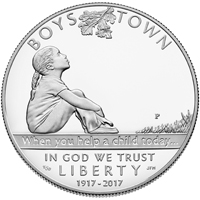
More than one issue price for coins
Why don’t you include the issue prices in the Coin Market listings for the commemoratives? It would be helpful at tax time.
We do get an occasional call for issue prices, but most collectors are aware of the IRS regulations and keep the price lists that come with the coin order forms. The IRS requires that you keep receipts and other records of what you paid for coins so that when you sell them you can deduct the purchase price from any profit
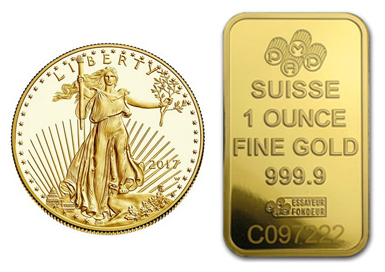
Two Franklin types puzzle reader
I have two 1956 Franklin half dollar. I have both Type 1 and 2, but my program doesn’t tell me which is which. All it says is that one is the reverse of 1950-1955 and the two is from 1957-1963, I have looked in all my books but I can’t find any reference that tells me what each should look like
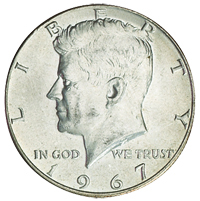
Paper money’s start came in 1690
When was the first paper money issued in what is now the United States?
The Massachusetts General Court issued the first paper money in the colonies in 1690. The U.S
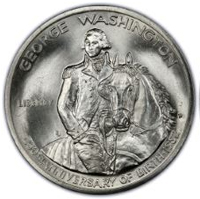
Congressman revived commems
(Image courtesy http://www.pcgscoinfacts.com)
What was the motivation to resurrect our commemorative coin issues in 1982?
President Dwight D
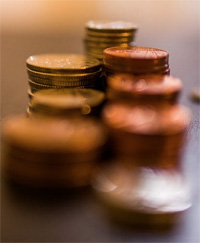
Any tampering was counterfeiting
Did our early laws make a distinction between counterfeit coins and altered coins?
The attitude of early lawmakers seemed to be that any spurious pieces of whatever ilk were bad. Accordingly, the law as laid down in Massachusetts in 1786 described the coloring or gilding of coins (to make silver coins look like gold or copper coins resemble either silver or gold) by whatever means as subjecting the maker to the full limit of the law as a counterfeiter and forger.
I have a Chinese bank note that has the wording in the Chinese and English languages
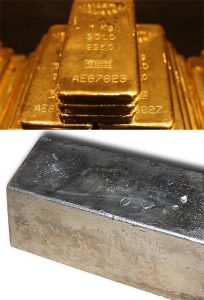
Metal prices affect common dates
What is the true impact of the spot price of precious metals on the value of our previously circulating silver and gold coins?
A majority of the circulation strike gold and silver coins are common, due either to their date and mintmark, or due to the condition in which they have survived. Most of these coins will follow the spot price of their metal composition, possibly having some minor additional collector value. Coins that are scarce to rare due to their mintages, or the condition in which they have survived, are impacted as well, but not as much
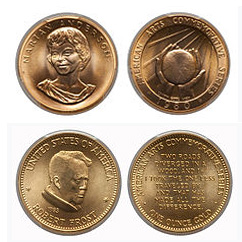
West Point called Fort Knox of silver
The U.S. Mint facility at West Point is recognized today as an official U
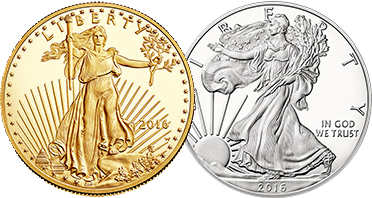
Gold coin denominations strange
Please settle an argument. Is the “eagle” a real denomination for U.S
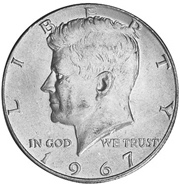
Keep corroded coppers separately
As I was going through a container of pre-1983 Lincoln cents, several had green corrosion (verdigris?). Does this contaminate the other cents in the container? Should they be quarantined?
In my experience green corrosion on Lincoln cents and other denominations is often caused by the coins having been stored in a leather wallet. This is only one contaminant that may have come in contact with the coins
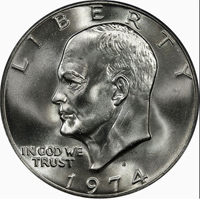
Ike dollar $10 issue price too high
Wasn’t there a scandal years ago in connection with the U.S. Mint profiteering on Eisenhower proofs and special uncirculated strikes?
It wasn’t so much a scandal as it was a black eye for the Mint
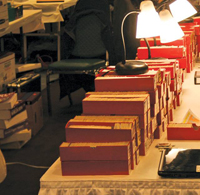
Composition changes to win war
What was the motivation to choose a copper-silver-manganese alloy for the so-called war nickels of 1942 to 1945?
Since nickel was a critical war materiel, Congress didn’t want it being used to strike coins. The choice of the three-metal alloy made sense since it ensured adjustments would not be needed for the coins to be accepted in vending machines without tripping counterfeit detectors.
Is there an unwritten rule that coins purchased at coin shows are not returnable?
Coins proved to be fakes at some later date should always be returnable without any time limit
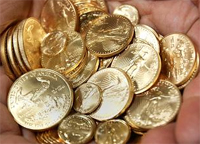
Mint struck $4.5 billion in gold coins
What was the grand total of gold coinage struck by the U.S. Mint prior to 1934?
Between 1795 and 1933 the Mint struck $4,526,218,477
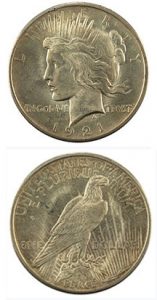
Congress not required for Peace $1
Could you please give me the name and date of the legislation that authorized the production of the Peace dollar?
This might be a surprise, but there never was a specific law passed to authorize the Peace dollar. A bill was introduced in 1920, but it was killed when it was discovered that the provisions of the Pittman Act of April 23, 1918, still applied. This meant the design change could be made based on approval by the Commission of Fine Arts and the President
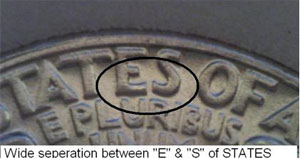
Proof dies employed for circulation strikes
(Image courtesy WashingtonType-B.com)
The 1956-1964 Washington quarters from Philadelphia, not Denver, display a small percentage of the population as the Type [Variety] B or proof reverse on the circulation coins. Your publication on Nov
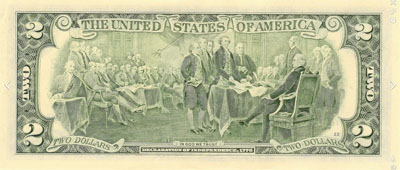
More than one Trumbull painting
Is the design on the 1976 $2 note the same as the Trumbull painting in the Capitol?
Trumbull’s 1817 painting hangs in the Capitol Rotunda. In that painting some of the signers were left out. As a result, the design on the note more closely matches an earlier Trumbull painting hung in the gallery of Yale University
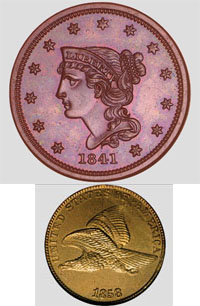
Doubled large cent not listed anywhere
I want to know if there is any precedent for an 1818 Coronet Head cent with a doubled die at the reverse on AMERICA. I found one on a coin I bought a couple of months ago. I can’t find any variety in this year with a doubled die

Shipwreck carried money for slaves
I recently read that a large number of manilas were recovered from the wreck of the English schooner “Douro” during the 1970s. What was the function of a manila as money?
The “Douro” sank after hitting the Great Crebawethan rock off the isles of Scilly in 1843, the ship carrying thousands of bronze manilas manufactured in Birmingham, England, for use in purchasing slaves in West Africa. These bracelet-shaped 2
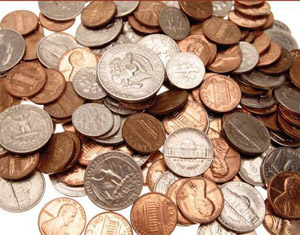
Why aren’t all varieties in price guide?
There are several varieties of the 2009 Formative Years cent, these being the number of fingers showing on Lincoln’s hand on the reverse. Why is it that these varieties aren’t listed in price guides?
There are varieties of many coins that are not listed in general price guides. Some of these varieties simply aren’t famous enough for most collectors to attach any additional value to them
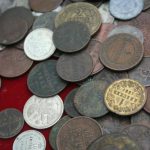
Adjustment mark can lower price
World Coin Clinic
By Richard Giedroyc
• Can you explain what an adjustment mark is?
Adjustment marks are visible scrapes on the planchet made prior to the coin being struck on that planchet. They were made to reduce the weight of the planchet. These scrapes were made deliberately at the mint to adjust the weight of the coin to regulation
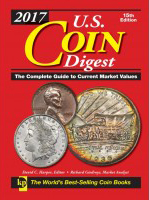
Coins struck over others unusual
Have U.S. coins ever been used as the host blank for a foreign coin?Get the newest U
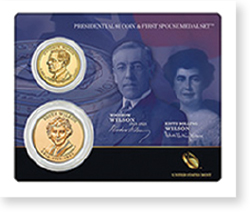
Random coin stampings untraceable
I have a French coin with a large “S” punched in horizontally across the bust. Who put it on the coin?The countermark on your coin is something that could have been added at any time from when the coin was minted to right now, so there is no way of tracing it or attributing it to anyone. Such markings usually lower the value of the host coin
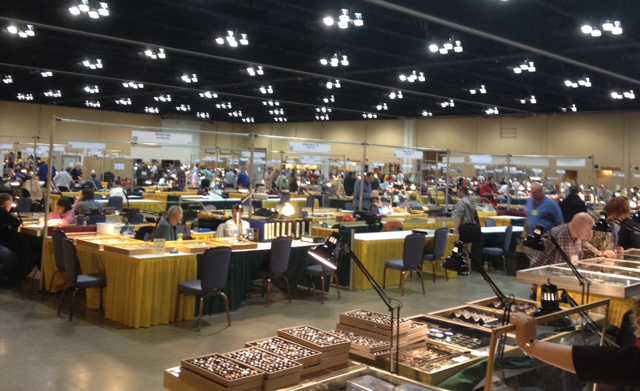
Tracking prices not an easy thing
Could the trend of the coin market be tracked by following the results of a weekly or monthly local coin show?View of the Central States show bourse floor.It would be necessary to have all the dealers at that show share their invoices to track the transactions reliably. There are still the problems of the quality of grading of what has been sold and how much or little “fresh” merchandise is available each time
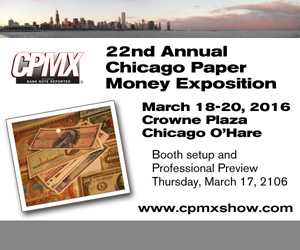
Copies and fakes create problems
By Richard GiedroycWhy was the Hobby Protection Act enacted?Replica coins and bank notes are not meant to deceive, but to be sold as souvenirs or examples. Too many entry-level collectors were purchasing these without understanding these replicas are not original. A counterfeiter will ignore the requirements of the Hobby Protection Act to mark a replica coin as a copy
Fort Knox gold arrived in 1937
By Richard GiedroycWhen was the original gold deposit placed in Fort Knox?The U.S. Gold Bullion Depository at Fort Knox, Ky
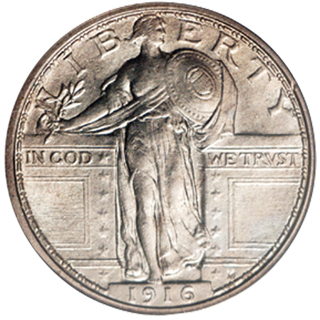
Coin Clinic: what’s a pennyweight?
By Richard GiedroycCan you explain how pennyweight fits into this weight and purity system for gold?It takes 20 pennyweight to equal one troy ounce of gold. Another way to express this is one pennyweight being equal to 24 grains. Pennyweight is a weight unit primarily used in the United States
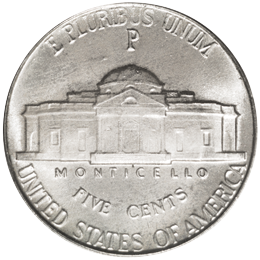
Coin Clinic: Why should collectors learn to grade coins?
By Richard GiedorycYou have warned collectors to use their own grading skills when evaluating coins for purchase. Does that mean we cannot rely on third-party grading services?No. But it is important to point out that there are likely too many people who are collecting the encapsulation rather than the coin
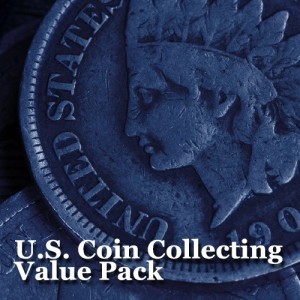
Coin Clinic: Bicentennial Lincolns missing ‘VDB’ initials
By Richard GiedroycFive years later it is unusual to find any 2009 Lincoln cent coins. On the lower right shoulder of the 2009 Formative Years standard front [obverse] Lincoln cent is VDB. Is this common? I cannot find the VDB on the other 2009 series
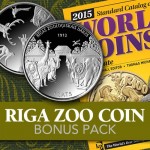
Coin Clinic: First Washington quarters rationed
By Richard GiedroycWas there any public interest in the 1932 Washington quarters when they were released?The public announcement of the coins as commemoratives set off a buying boom. When they were issued on Aug 1, 1932, the banks found it necessary to ration the coins, selling just one to a customer. This occurred despite the gloom of the Great Depression
Coin Clinic: Plastic coin issue might be first – or not
By Richard GiedroycTransdniester recently issued coins made of plastic. Are they really the first government to issue coins of this material as they claim to be?When you say “first government,” that becomes questionable. Keeling Cocos was established by two gentlemen in the 19th century
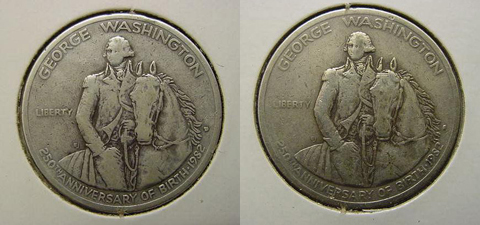
Coin Clinic: Coins wear in owners’ pockets
By Richard GiedroycOne recent question asked in your column is how long it takes for coins to wear. In 1982, when the new George Washington commemorative half dollar came out in silver I decided to carry one of these in my pocket for 10 years because I had not carried silver coins in my pocket in decades and I wanted to see how it wore.Two different Washington half dollars were each carried as a pocket piece for 10 years
Coin Clinic: Emotion sells coins
By Richard GiedroycIn the Sept. 9 issue someone inquired about 9-11 memorial coins. What I have falls into the bullion type coin
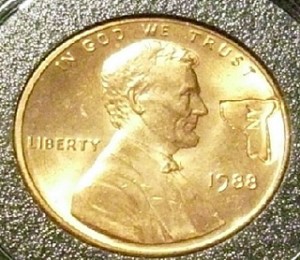
Coin Clinic: State map on cent puzzles reader
I recently came across this penny in change and wondered what the imprinted image was. I am guessing that it was some type of promotion for the State of New York, as the outline appears to be that of the state. Have you any idea what it could be?There was a set of Lincoln cents on which one of each of the 50 states was countermarked, I believe during the mid-1970s and again later
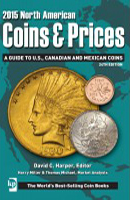
Coin Clinic: Kennedy half collected most at release
By Richard GiedroycThe statement was made some time ago that the Kennedy half is the “most collected coin in the world.” Is this still true?This was probably around the time the Kennedy half dollar was first released and people went mad for it around the world. But most of that activity could be classed as hoarding, rather than collecting

Coin Clinic: Lettered edges can face up or down
By Richard GiedroycThe 2015 North American Coins & Prices is the perfect all-in-one guide for the coin collector, dealer and enthusiast.Purchase your copy here!The lettered edge, when present, on our current golden dollar coins can face either towards the obverse or the reverse. Is this true of all lettered edge coins, or are there coins where the lettered edge consistently faces one side of a coin?The edge lettering on our current dollar coins is applied in a separate step from the step in which the obverse and reverse impressions are added to the coinage blank
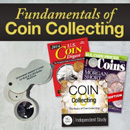
Coin Clinic: Open roll if you want to know the date
By Richard GiedroycKick-start your collection with the Fundamentals of Coin Collecting set of essential resources and tools. Get yours today! How can I determine the date of the coins in my Brilliant Uncirculated bank roll if the reverse is what is showing on the end coins?I know you don’t want to hear this, but you will need to unwrap the coins to determine their date. The only exception would be coins with a unique reverse, such as the 2009 Lincoln Centennial cents, 2004 to 2005 Westward nickels, or statehood quarters
Coin Clinic: Plastic coin issue might be first – or not
By Richard GiedroycTransdniester recently issued coins made of plastic. Are they really the first government to issue coins of this material as they claim to be?When you say “first government,” that becomes questionable. Keeling Cocos was established by two gentlemen in the 19th century